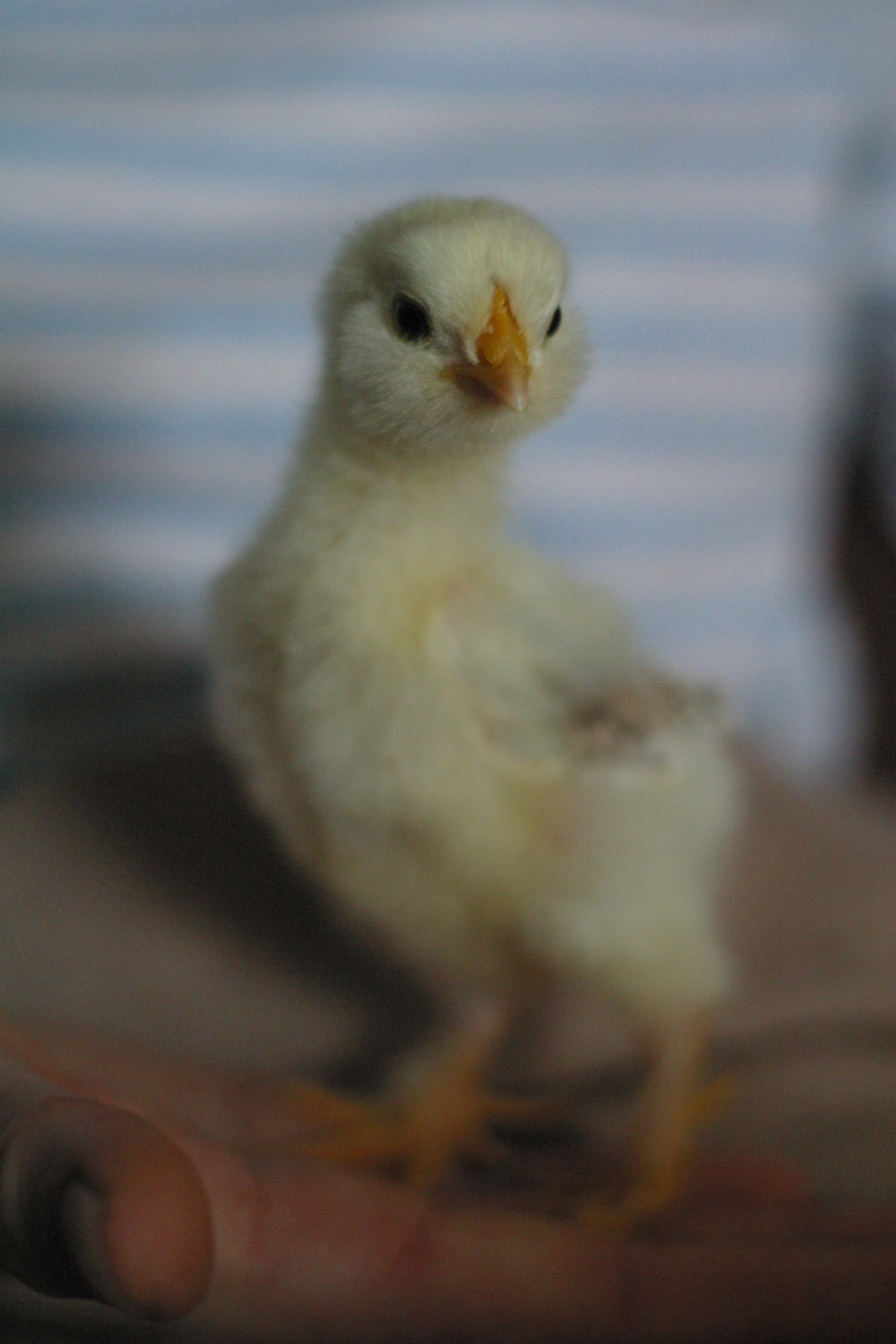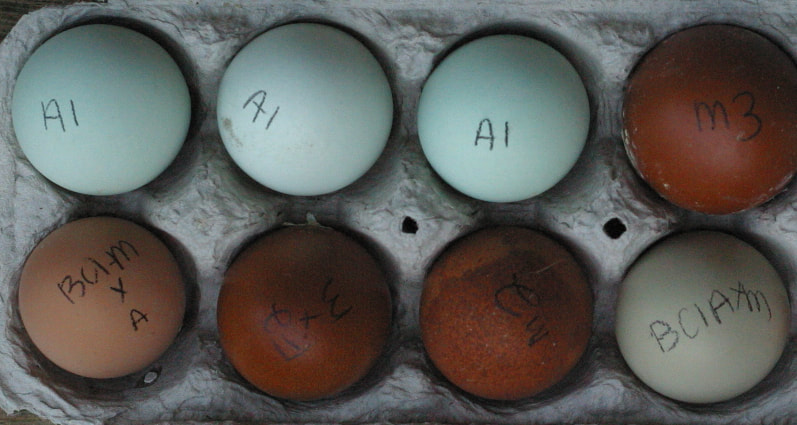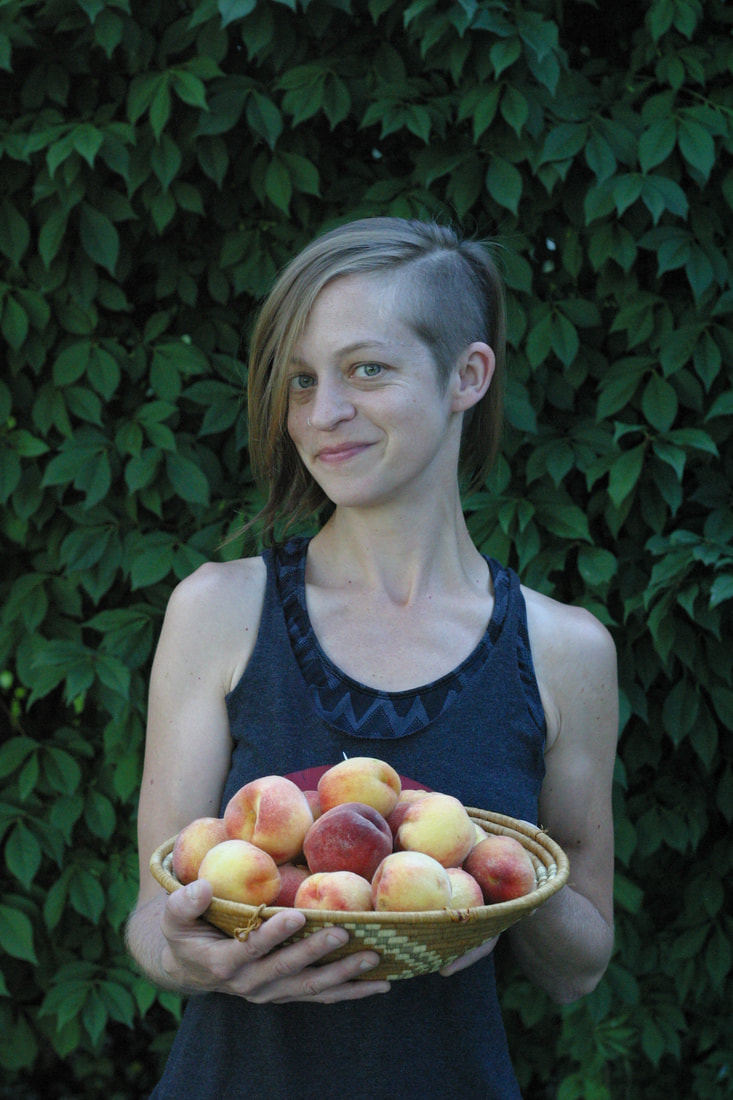|
Have you ever wished you knew which chick in a hatch came from which egg? Are you launching a breeding program and wondering how to keep track of matings and offspring? Or do you simply want to keep tabs on your feathered friends? In this post we’re going to talk about how to pedigree your chickens, which will help you do all of the above. Knowing how to pedigree your birds is a valuable skill that will come in handy whether you’re a serious breeder or just love hatching chicks for your backyard flock. What does it mean to pedigree chicks? Put simply, it means keeping track of your bird’s genetic background. Depending on your breeding program or goals, this practice may take different forms and happen for different reasons. The pedigree process is necessary when managing a breeding program and allows you to trace the origins of the chicks you hatch by pen or individual mating. When breeding for egg color, you can track the color of the egg a chick hatched from (definitely helpful when selecting for darker Marans eggs!). Tracking the pedigree of chicks is not just for breeders, though. These tools are also incredibly helpful for identifying and separating breeds and crosses that look the same at hatch, or keeping tabs on an individual bird’s behavior, health, and vigor. Keeping Track of Your Hatching Eggs To pedigree chicks, you must begin with the egg. If you are hatching your own, make sure to label each egg with a pencil when collecting them (grease pencils show up well, especially on dark eggs). We use a clan mating system for our purebred breeding groups (learn all about this system here), and each clan has its own pen. This system simplifies a lot of our record keeping, because we only need to keep track of which coop an egg came from, not which hen. What if you want to keep track of the exact parentage of each chick? Some breeders accomplish this by having one hen per pen or cage during the breeding season, and allowing regular conjugal visits by the rooster. While this makes tracking parentage easy, the birds themselves are denied the active social life that is so important to them. If, like us, you prefer to provide your birds a vibrant flock life all year round while tracking individual matings, you have a couple of options: Trapnests are nesting boxes with flaps that lock in place after a hen has entered the box. The hen will not be able to leave until you open the door for her, at which point you can take note of her identity and mark her egg accordingly. Trapnests can be purchased online, as can just the doors themselves, to be installed on an existing nest box. You’ll just have to visit your coops often to release the hens from the nest. Food coloring dabbed around the vent is another recommended method. Use a different color for each hen you’d like to track. Just make sure not to use red–this will encourage other hens to peck at her vent! When the hen lays an egg, streaks of food coloring will be transferred to the shell. I’ve tried this method with mixed results, but some of our eggs are quite dark. If your hens lay white or tan eggs, it may be easier to see the food coloring markings. Track Your Chicks During the HatchThe pedigree process continues during the hatching process. If you’ve incubated before, you know that once those chicks leave the shell, it’s utter chaos in the ‘bator. There’s no way to know which chick came from which egg unless you use a pedigree box or bag. Pedigree boxes and bags are containers that serve as safe places to separate hatching eggs inside the incubator, so that you can keep track of chicks as they hatch. A pedigree box can be fashioned out of hardware cloth. If the sides are high enough, and your incubator large enough, small cardboard boxes or tupperware containers (without the lids on, of course) will also do the trick. We use mesh bags made specifically for hatching chicks; you can purchase them on our website right here. Whatever you use, make sure that your incubator, hatching tray, or box is lined with paper towels or a similar material, to give your chicks the traction they need. Slippery surfaces can lead to the development of spraddle leg. The time to place eggs in a box or bag is when they enter lockdown–the last three days of incubation, when you’ll stop turning the eggs and increase humidity. The incubator should not be opened during the hatch, so make sure to box or bag your eggs at the very start of lockdown. We were a little hesitant to use the pedigree bags at first. Would the chicks be okay in there? Would their toes get caught in the mesh, and would they have enough room? As it turns out, our fears were unwarranted, and we’ve had exactly zero issues using these bags. We use them to separate our Marans and Ameraucana eggs by clan, and separate our Olive Egger generations and backcrosses. I also use the bags to isolate particularly dark or unique egg colors, and take note of who hatched from them. Banding Chicks After the HatchAs you remove your chicks from the incubator, you’ll need a way to continue to keep track of them. There are two main ways to do this: leg bands or toe punches. The toe punching method uses a small tool to make a tiny hole in the skin between a chick’s toes. Up to sixteen different combinations of punches are possible. The advantage of toe punches is that when done right, they are permanent, unlike leg or wing bands which have the potential to fall off. On the other hand, toe punches can only track birds by groups, not individually (unless you only have sixteen birds), so at least for us, it’s only helpful when used in tandem with another method anyway. Plus, there’s the fact that you have to…punch a baby chick’s toes. While we briefly used toe punching as a way to pedigree our chicks, it was quickly apparent that the benefits didn’t outweigh this unpleasant downside for us. I think the chicks agree. Instead, we use colorful leg bands, with a different color or color combination for each breed or cross. Additionally, we add a band when necessary to keep track of chicks that don’t meet our standards for breeding from the start: they needed help hatching, required treatment for crooked toes or spraddle leg, or simply didn’t seem vigorous. Depending on the issue, these chicks will enter our adoption program or join our laying flock when they mature. If you are using leg bands, keep an eye on them as your chicks grow to make sure the bands don’t become too tight and dig into their skin. If you are tracking specific matings, depending on your situation colored leg bands might work for you at this stage, or you could source numbered bands for chicks. Wing bands, described in the next section, can be applied at hatch, but in my experience it’s better to wait until the chicks are two weeks old. Before this age, wing bands have a tendency to fall off or get turned around on those tiny, tiny wings. How to Pedigree Chicks as They MatureColored leg bands and toe punches are great ways to track chicks by group, but we also want to track our individual birds over the span of their lifetime. We do this using pre-stamped numbered metal wing tags. Once our chicks reach two weeks old, they are large enough to be wing tagged. A wing tag is applied to the wing web, a tiny stretch of skin near the shoulder of the bird. We use numbered wing tags so that we can keep track of individual chickens, which is vital for maintaining our breeding programs, but also useful in a larger backyard flock for keeping tabs on health or behavioral issues. Wing tags are meant to be permanent, though we’ve had a handful fall off over the years. You may be wondering why we are comfortable wing tagging but not toe punching. That choice is informed by our birds, who have a strong reaction to toe punching but take wing tagging well. Toe punching is awkward, and in the process of getting that little tool to its target it’s easy to squish a toe. It’s hard on the birds and you can tell. Wing tagging is far easier on them–like a quick ear piercing at Claire’s, over and done in a second. Many chicks don’t even peep while it happens. Afterward, there’s some curiosity and pecking at their new jewelry, and then they move on. Wing bands will look huge on a chick, but once your birds mature the tag will not even be visible. If wing tagging is not your thing (trust me, I was nervous at first), then you can track your individual birds with numbered leg bands, and track groups easily and from a distance with different colored leg bands. Unlike wing bands, leg bands need to be changed out for larger sizes multiple times as your bird matures. Make sure to keep an eye on the bands, and change them before your birds outgrow them. Keeping Flock NotesFinally, what do you do now that you can keep track of your birds individually? I love using a Google Sheet to keep track of information about our flocks. We track each individual’s clan, and take notes on health, temperament, egg color, and the Standard of Perfection for each bird as they mature. This information is invaluable when it comes time to make our final evaluations and selections. Final ThoughtsTo pedigree chicks, you only need a few simple tools: a pencil, some hatching bags, chick leg bands, and the bands of your choice as your birds get older. I hope this post took some of the mystery out of how to pedigree chicks, and will help you track your feathery floofs in the future. And as always, if you have any questions please ask away in the comments! Did you like this post? Then you might enjoy these:
What is Clan Mating? And How to Start Your Own Program at Home How We Breed Poultry at Silver Fox Farm
1 Comment
beth castle
4/28/2023 07:44:35 pm
Thank you for this article. I am new to chickens and am gleening information from every book, blog, place, or person I can!!
Reply
Leave a Reply. |
Hi, I'm Maeg.Welcome to our blog! Categories
All
|
©
The Silver Fox Farm







